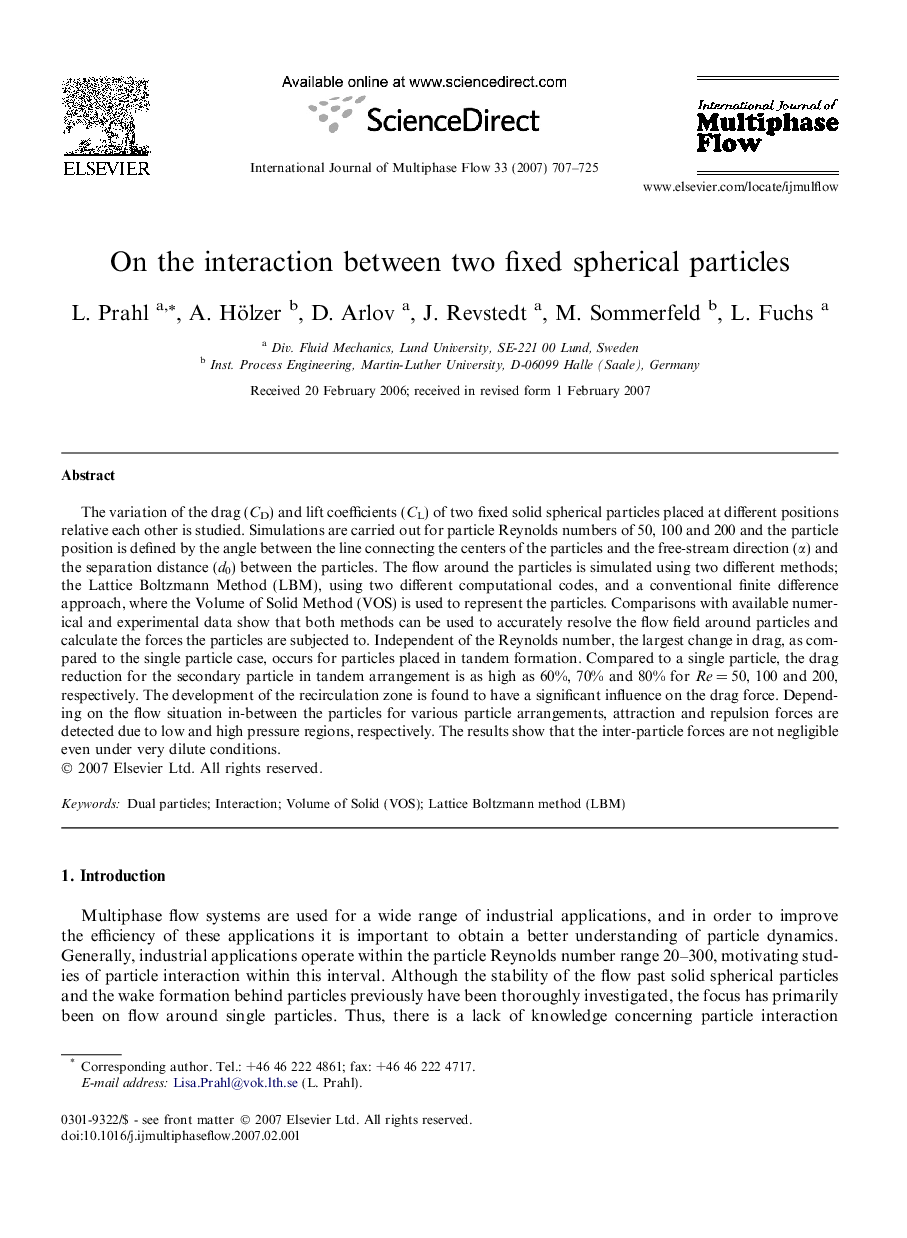| Article ID | Journal | Published Year | Pages | File Type |
|---|---|---|---|---|
| 667072 | International Journal of Multiphase Flow | 2007 | 19 Pages |
The variation of the drag (CD) and lift coefficients (CL) of two fixed solid spherical particles placed at different positions relative each other is studied. Simulations are carried out for particle Reynolds numbers of 50, 100 and 200 and the particle position is defined by the angle between the line connecting the centers of the particles and the free-stream direction (α) and the separation distance (d0) between the particles. The flow around the particles is simulated using two different methods; the Lattice Boltzmann Method (LBM), using two different computational codes, and a conventional finite difference approach, where the Volume of Solid Method (VOS) is used to represent the particles. Comparisons with available numerical and experimental data show that both methods can be used to accurately resolve the flow field around particles and calculate the forces the particles are subjected to. Independent of the Reynolds number, the largest change in drag, as compared to the single particle case, occurs for particles placed in tandem formation. Compared to a single particle, the drag reduction for the secondary particle in tandem arrangement is as high as 60%, 70% and 80% for Re = 50, 100 and 200, respectively. The development of the recirculation zone is found to have a significant influence on the drag force. Depending on the flow situation in-between the particles for various particle arrangements, attraction and repulsion forces are detected due to low and high pressure regions, respectively. The results show that the inter-particle forces are not negligible even under very dilute conditions.
